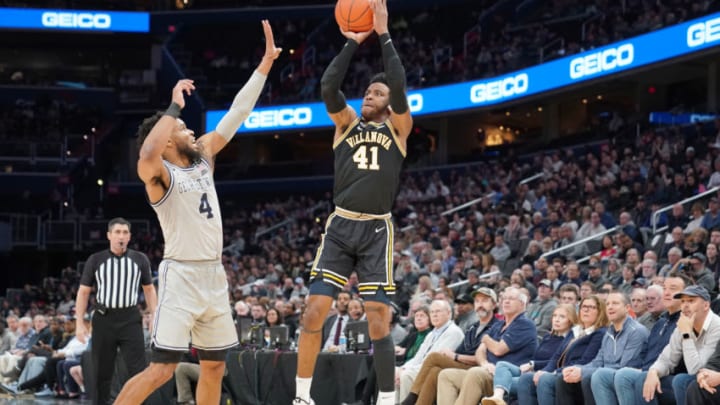
As the Minnesota Timberwolves continue to look for starting-caliber wings, Saddiq Bey could be a possibility for the Wolves at pick No. 17.
The Minnesota Timberwolves have plenty of needs on their roster. Depending on what they ultimately do with the No. 1 pick, the decision to be made with No. 17 pick in the 2020 NBA Draft looms large.
Perhaps the Wolves will trade backwards for more selections. They’d love to move the pick, plus an asset like James Johnson’s expiring contract, for a current NBA player that could step into the lineup immediately. More likely, they’ll try and pick up a selection in the 2021 draft in exchange for No. 17.
But if they’re unable to do any of those things, this is a draft with plenty of depth through the back half of the first round and into the second.
Among the wings available who can contribute on both ends of the floor, Villanova’s Saddiq Bey stands out as an attractive option, with a skill set that would fit the Wolves’ lineup perfectly.
Saddiq Bey NBA Draft 2020 Prospect Profile: Strengths
Bey is 6-foot-8 with a 6-foot-10 wingspan. He’s also athletic and smart, which makes him a perfect fit on the defensive end of the floor for a team in desperate need of defenders at any position.
The former Villanova Wildcat will mostly guard 3s initially, but should be able to switch onto 2s and 4s given his size/athleticism combination. The Wolves love highly versatile and switchable players (see: Jake Layman, James Johnson), and Bey fits that description.
Additionally, Bey is a fantastic team defender, using his height and length to disrupt passing lanes. His high level of intelligence will make a world of difference on a team without too many players who truly understand the team concept on the defensive end of the floor.
Offensively, Bey shot 45.1 percent from deep on 5.6 attempts per game last year. Across two years of college ball, Bey made 41.8 percent of his total 3-point attempts. His mechanics are solid, although his release is a little low and a tad slow. It should still translate, and NBA coaches will surely work with him to tweak his release point.
Bey may also be able to function as a secondary playmaker. He isn’t going to create much offense for himself, but in the Wolves’ offense that’s just fine. Instead, he can help create shots for others with his understanding of timing and spacing, and combined with his size and athleticism he could develop into a serious problem for opposing defenses.
Think of Bey as a higher-ceiling version of a player like Jake Layman. He’s already a better shooter than Layman and should be at least as good of a defender right off the bat. Both players can play the 3 and the 4 on both ends of the floor.
Let’s take a look at some of Bey’s weaknesses.
